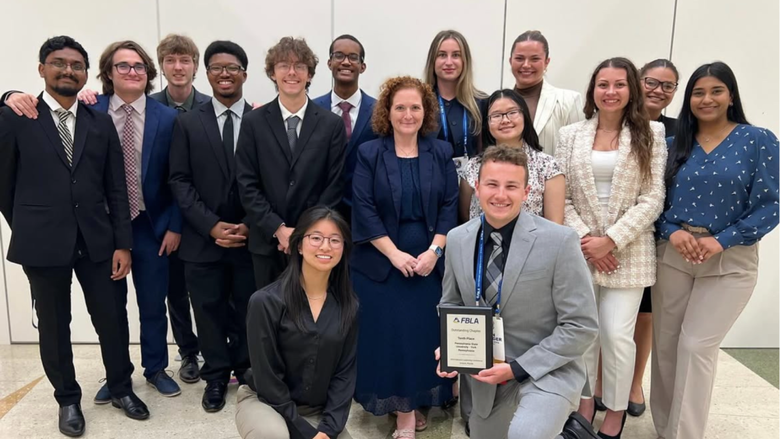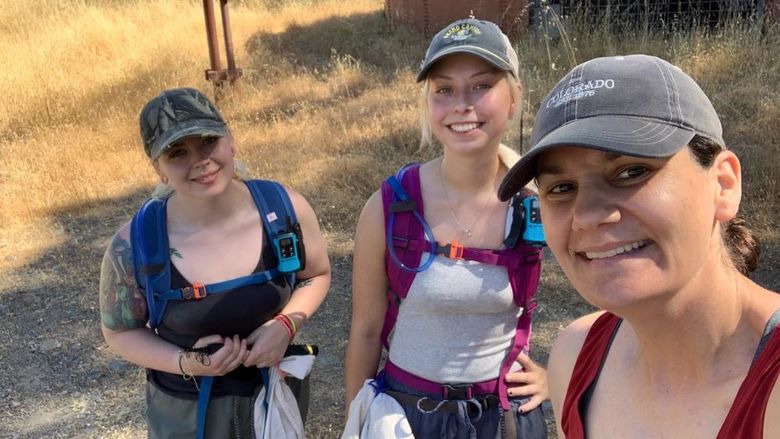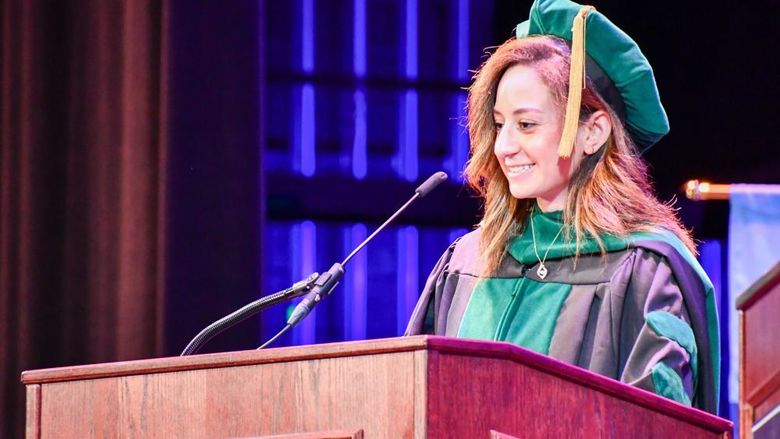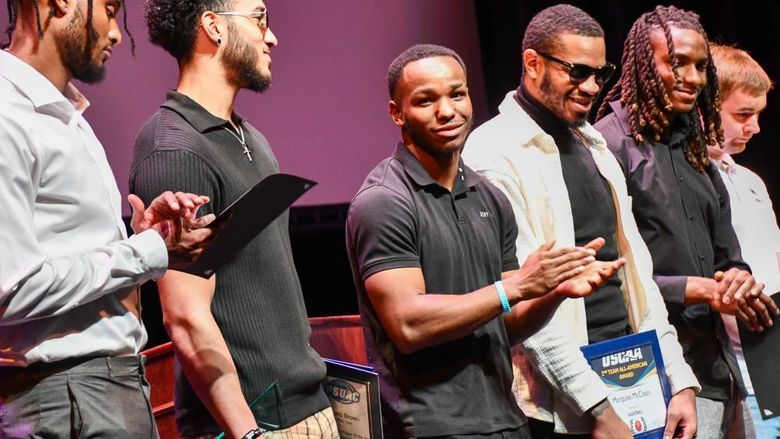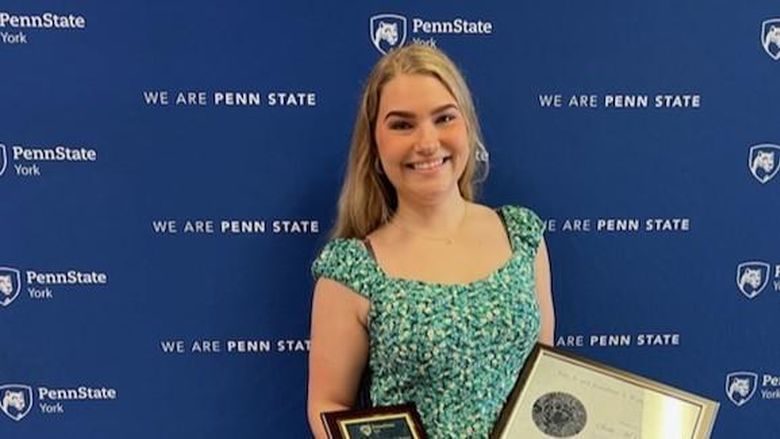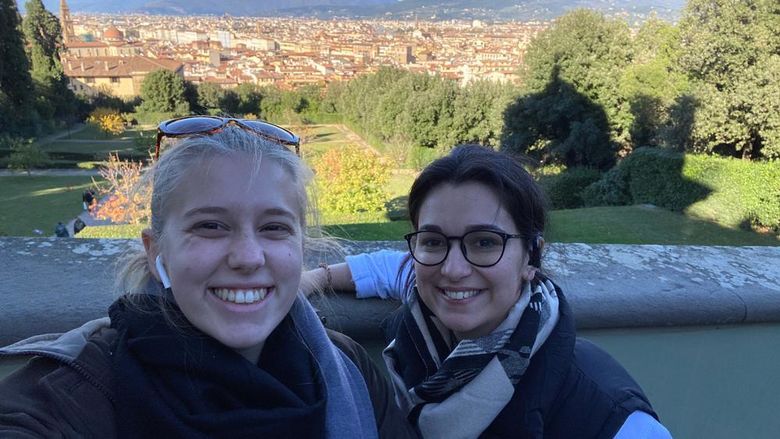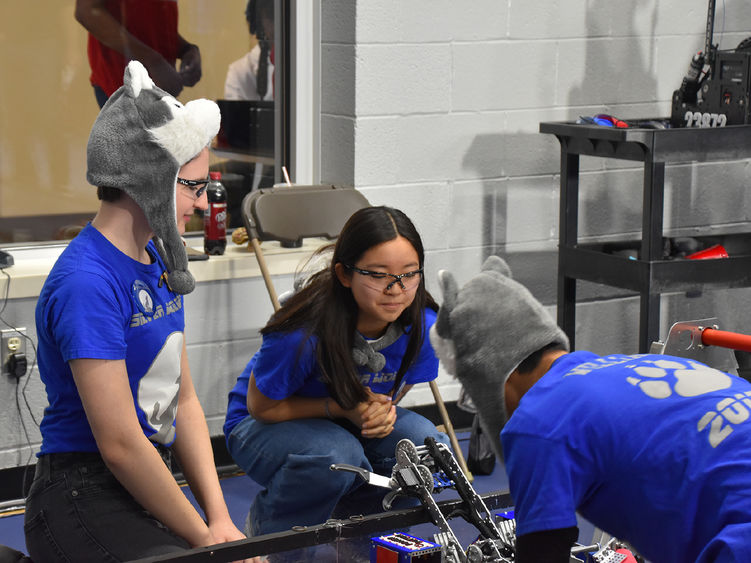
Members of the Silver Wolfs robotics team, who were a part of the winning alliance, worked on their robot prior to the start of the Nittany Lion Qualifer at Penn State York on Jan. 20. The First Tech Challenge (FTC) robotics competition brought together 26 teams of middle and high school students to Penn State York.
YORK, Pa. — More than 500 people filled the Joe and Rosie Ruhl Student Community Center at Penn State York for the First Tech Challenge (FTC) Nittany Lion Qualifier robotics competition on Saturday, Jan. 20, at Penn State York. Middle and high school students from across the state, twenty-six teams, gathered to compete, and play the game, "CenterStage." Alliances are comprised of three teams.
The alliance of Silver Wolves (20153), Unionville High School in Kennett Square, Pennsylvania; Hippopotamonstrosesquepedaliam Tetartocephalic Brain STEM Robotics Team (23872), BrainStem, Baden, Pennsylvania; and Raiderbots (13669), Coatesville Area High School Robotics, Coatesville, Pennsylvania, were the winners. In second place was the alliance of Techspark (10333), Techfire Robotics of York, Pennsylvania; Javengers (8468), PACAR, Mechanicsburg, Pennsylvania; Hackin’ Hounds (21324), York Country Day School, York, Pennsylvania. Alliances are comprised of three teams.
View photos of the competition on Flickr.
Competitors arrived on campus just before 8 a.m. and matches began following the opening ceremony at 11 a.m. Throughout the day, teams competed with the semifinals and finals taking place in late afternoon. Each match was 2 minutes and 30 seconds and consisted of an autonomous section of 30-seconds where the robots were programmed to run on their own. The following 2 minutes robots were driver-controlled, and teams could earn extra points for performing a variety of tasks. During the last portion of the match, end game, some teams launched a drone (paper airplane) from the robot and depending on where it landed earned points, while others had the robot hang on a bar that was a part of the playing field.
Four teams advanced on to the state competition: Silver Wolves, Javengers, Hippopotamonstrosesquepedaliam Tetartocephalic Brain STEM Robotics Team, all mentioned earlier, and Battle Bots (20152), a community-based team, Chalfont, Pennsylvania.
The acronym "FIRST" means "For Inspiration and Recognition of Science and Technology," and the organization was founded in 1989 by Dean Kamen, an accomplished inventor who wanted to inspire young people to appreciate science and technology. The FIRST Tech Challenge program is one of the four levels of FIRST, a worldwide robotics competition that engages students each year. The FIRST Tech Challenge is open to students in grades 7-12.
Guided by adult coaches and mentors, students develop science, technology, engineering, and mathematics (STEM) skills and practice engineering principles, while realizing the value of hard work, innovation and sharing ideas. Participants have access to tens of millions of dollars in college scholarships.
Teams are judged on their sportsmanship, performance of their robots, completion of tasks, ability to follow rules and a variety of other criteria. Following a sports model, teams of middle and high school-aged students are challenged to design, build and program a robot to play a floor game against other teams’ creations.
For information about FIRST, visit the website.
